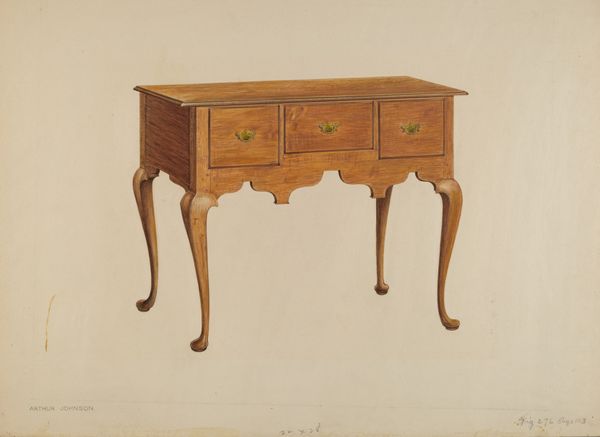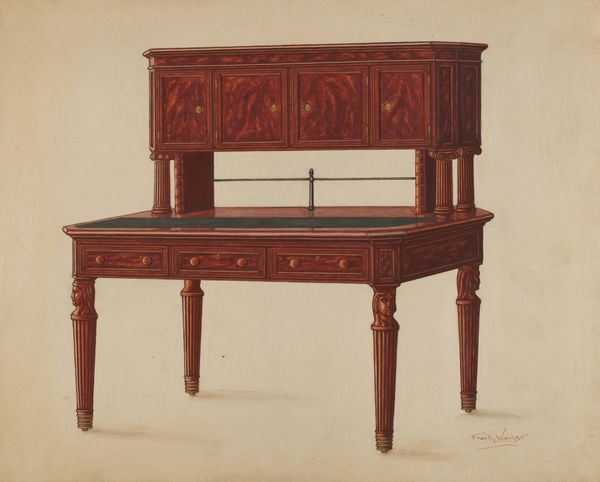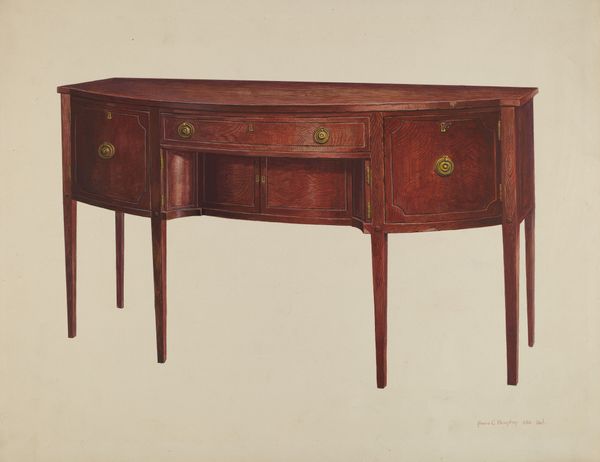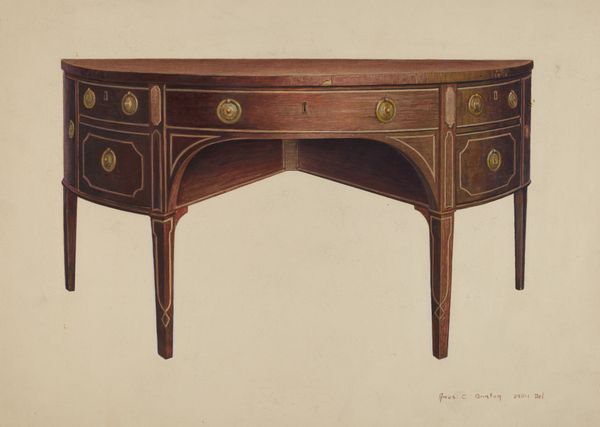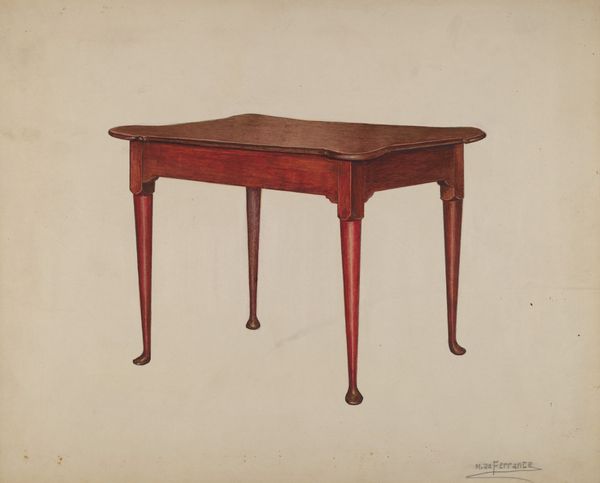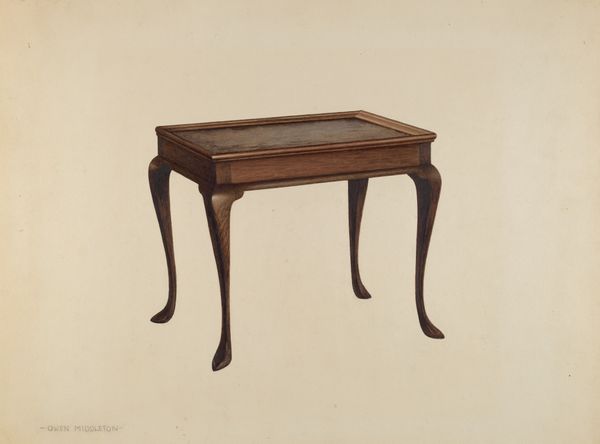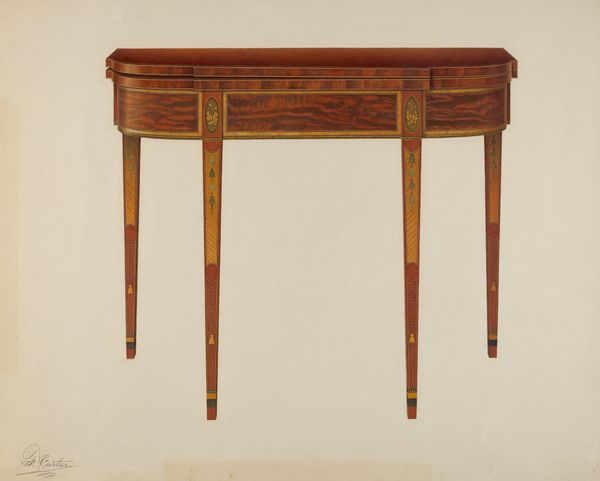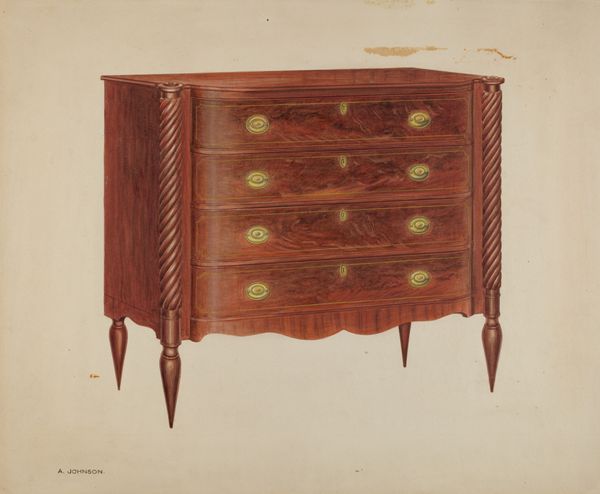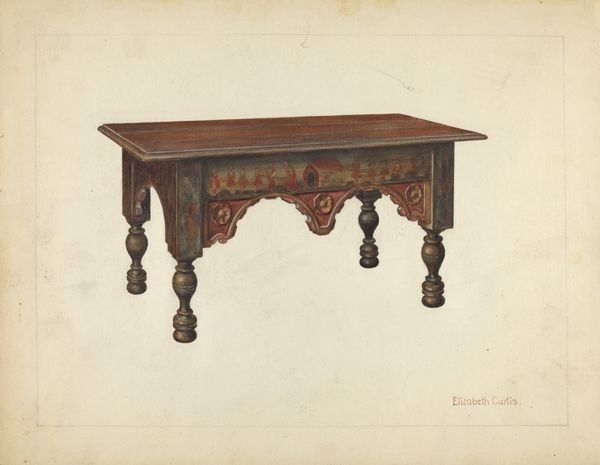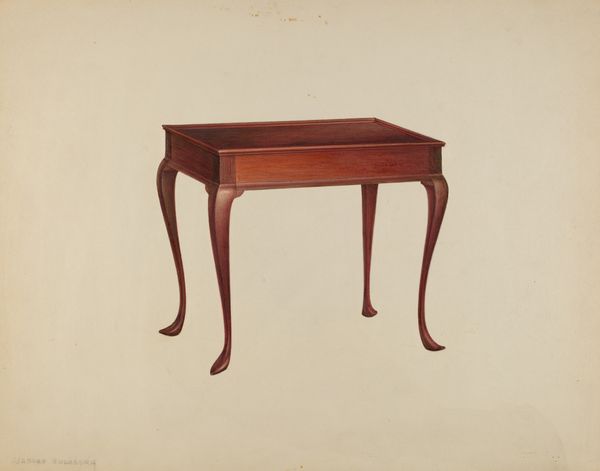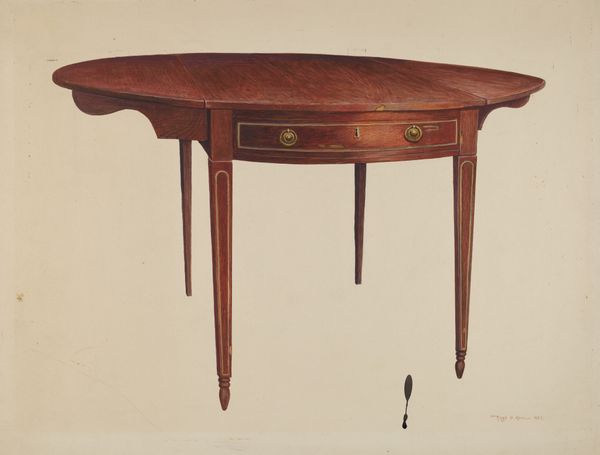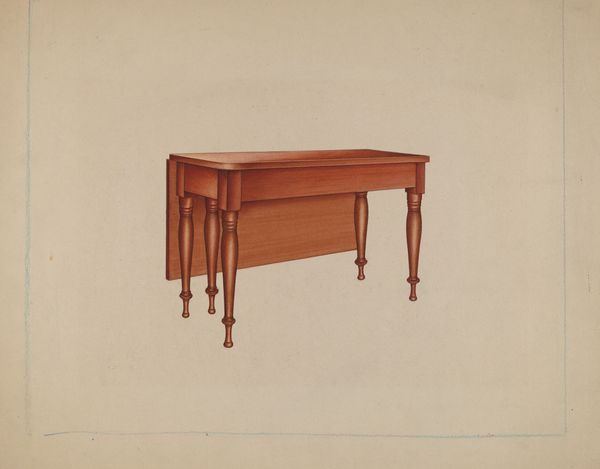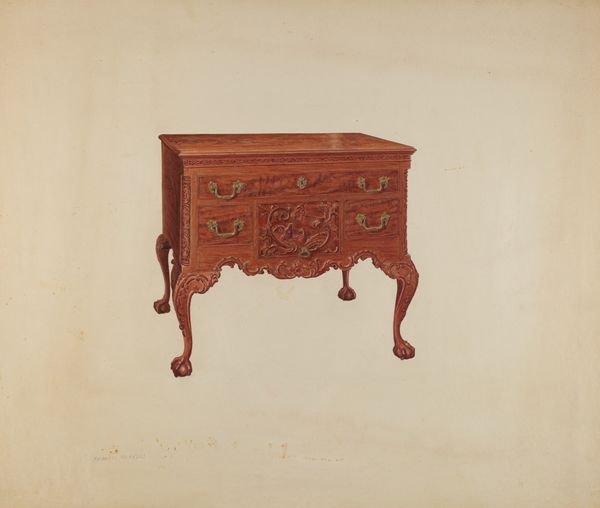
drawing, watercolor
#
drawing
#
watercolor
#
watercolour illustration
#
academic-art
#
decorative-art
#
watercolor
Dimensions: overall: 44.8 x 55.3 cm (17 5/8 x 21 3/4 in.) Original IAD Object: none given
Copyright: National Gallery of Art: CC0 1.0
Editor: This is a watercolor drawing of a Hepplewhite sideboard by Charles Bowman, dating from 1935 to 1942. It looks like a design study, very carefully rendered. What strikes me is the artist's attention to the detail of this particular piece of furniture. How do you see this object in its historical context? Curator: It's interesting to see this object presented as a watercolor drawing. Hepplewhite furniture, popular in the late 18th century, embodied neoclassical ideals and aristocratic aesthetics. But why make a drawing of it in the late 1930s? This choice highlights the persistent interest in historical styles, especially in times of economic or social upheaval. Editor: So you’re saying the style’s revival says something? Curator: Precisely! It reflects a desire for stability and perhaps a yearning for a perceived "golden age" during the Great Depression and pre-war era. Think about the decorative arts in public spaces during this period: they often sought to connect to a sense of national identity. Now, does this drawing romanticize the original design? Or is it aiming for accurate reproduction? Editor: It's difficult to say. It does have a very illustrative quality. It’s carefully painted and quite lovely. Curator: Exactly, and consider the role museums play. Designs like this, once commissioned and produced, often find their way into collections, shaping what’s valued and what’s presented as part of our shared heritage. This drawing itself could be interpreted as a document, an artifact, shaping our understanding of Hepplewhite’s era. Editor: That gives me a different perspective; seeing this as more than just an image, but a historical document about taste and institutional value. Thanks! Curator: Indeed, by viewing the image as an art object that documents how taste changed over time and social memory, it opens up much more layered perspectives on history.
Comments
No comments
Be the first to comment and join the conversation on the ultimate creative platform.
